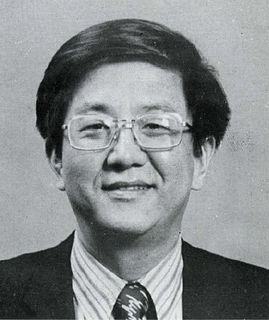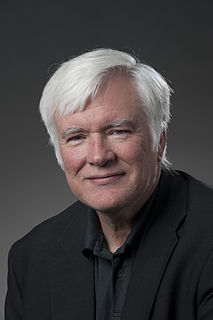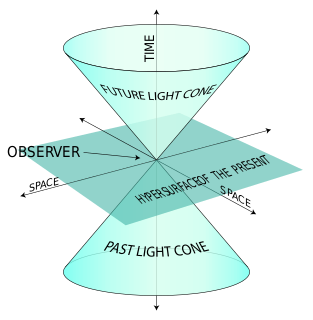External links
- Scientific publications of Jean Zinn-Justin on INSPIRE-HEP
- Jean Zinn-Justin publications indexed by Google Scholar
- Zinn-Justin's author page
- "Prof. Jean Zinn-Justin". Scholarpedia .
Jean Zinn-Justin | |
|---|---|
| Born | 10 July 1943 |
| Nationality | French |
| Alma mater | École Polytechnique |
| Known for | Quantum field theory, Renormalization group |
| Awards |
|
| Scientific career | |
| Fields | Physics |
| Institutions | Saclay Nuclear Research Centre |
Jean Zinn-Justin (born 10 July 1943 in Berlin) is a French theoretical physicist.
Zinn-Justin was educated in physics (undergraduate 1964) at the École Polytechnique, and did graduate work in theoretical physics at Orsay, (Ph.D. 1968) under the supervision of Marcel Froissart.
Zinn-Justin has worked since 1965 as a theoretical and mathematical physicist at the Saclay Nuclear Research Centre (CEA), where he was head of theoretical physics in 1993−1998 . He has served as a visiting professor at the Massachusetts Institute of Technology (MIT), Princeton University, State University of New York at Stony Brook (1972), and Harvard University, and further guest scientists at CERN. From 1987 to 1995 he was Director of the Les Houches summer school for theoretical physics. In 2003 he became leader of DAPNIA (Department of Astrophysics, Particle Physics, Nuclear Physics and Associated Instrumentation) at Saclay.
He has made seminal contributions to the renormalizability of gauge theories. He is a world authority on Quantum Field Theory in particle and Phase transitions in statistical physics, and, in particular, the Renormalization group organizing and connecting these two areas. [1] [2] [3] [4] He has written definitive books on the subject.
In 1977, he was awarded the Paul Langevin Prize of the Société Française de Physique; in 1981 the Ampère prize of the French Academy of Sciences; in 1996 the Gentner-Kastler Prize of the Société Française de Physique jointly with the Deutsche Physikalische Gesellschaft (DPG); in 2003 the Gay-Lussac-Humboldt prize. In 2011, he was elected to the French Academy of Sciences.
Quantum gravity (QG) is a field of theoretical physics that seeks to describe gravity according to the principles of quantum mechanics, and where quantum effects cannot be ignored, such as in the vicinity of black holes or similar compact astrophysical objects, and where the effects of gravity are strong, such as neutron stars.

Renormalization is a collection of techniques in quantum field theory, the statistical mechanics of fields, and the theory of self-similar geometric structures, that are used to treat infinities arising in calculated quantities by altering values of these quantities to compensate for effects of their self-interactions. But even if no infinities arose in loop diagrams in quantum field theory, it could be shown that it would be necessary to renormalize the mass and fields appearing in the original Lagrangian.
In theoretical physics, the term renormalization group (RG) refers to a formal apparatus that allows systematic investigation of the changes of a physical system as viewed at different scales. In particle physics, it reflects the changes in the underlying force laws as the energy scale at which physical processes occur varies, energy/momentum and resolution distance scales being effectively conjugate under the uncertainty principle.

Kenneth Geddes "Ken" Wilson was an American theoretical physicist and a pioneer in leveraging computers for studying particle physics. He was awarded the 1982 Nobel Prize in Physics for his work on phase transitions—illuminating the subtle essence of phenomena like melting ice and emerging magnetism. It was embodied in his fundamental work on the renormalization group.

In theoretical physics, specifically quantum field theory, a beta function, β(g), encodes the dependence of a coupling parameter, g, on the energy scale, μ, of a given physical process described by quantum field theory. It is defined as
In quantum field theory, a nonlinear σ model describes a scalar field Σ which takes on values in a nonlinear manifold called the target manifold T. The non-linear σ-model was introduced by Gell-Mann & Lévy, who named it after a field corresponding to a spinless meson called σ in their model. This article deals primarily with the quantization of the non-linear sigma model; please refer to the base article on the sigma model for general definitions and classical (non-quantum) formulations and results.

In particle physics, the history of quantum field theory starts with its creation by Paul Dirac, when he attempted to quantize the electromagnetic field in the late 1920s. Heisenberg was awarded the 1932 Nobel Prize in Physics "for the creation of quantum mechanics". Major advances in the theory were made in the 1940s and 1950s, leading to the introduction of renormalized quantum electrodynamics (QED). QED was so successful and accurately predictive that efforts were made to apply the same basic concepts for the other forces of nature. By the late 1970s, these efforts successfully utilized gauge theory in the strong nuclear force and weak nuclear force, producing the modern standard model of particle physics.

Benjamin Whisoh Lee or Ben Lee, was a Korean-born American theoretical physicist. His work in theoretical particle physics exerted great influence on the development of the standard model in the late 20th century, especially on the renormalization of the electro-weak model and gauge theory.
In theoretical physics, thermal quantum field theory or finite temperature field theory is a set of methods to calculate expectation values of physical observables of a quantum field theory at finite temperature.

Édouard Brézin is a French theoretical physicist. He is professor at Université Paris 6, working at the laboratory for theoretical physics (LPT) of the École Normale Supérieure since 1986.
In theoretical physics, statistical field theory (SFT) is a theoretical framework that describes phase transitions. It does not denote a single theory but encompasses many models, including for magnetism, superconductivity, superfluidity, topological phase transition, wetting as well as non-equilibrium phase transitions. A SFT is any model in statistical mechanics where the degrees of freedom comprise a field or fields. In other words, the microstates of the system are expressed through field configurations. It is closely related to quantum field theory, which describes the quantum mechanics of fields, and shares with it many techniques, such as the path integral formulation and renormalization. If the system involves polymers, it is also known as polymer field theory.
William Allan Bardeen is an American theoretical physicist at Fermi National Accelerator Laboratory. He is the son of John Bardeen and Jane Maxwell Bardeen.

Christopher T. Hill is an American theoretical physicist at the Fermi National Accelerator Laboratory who did undergraduate work in physics at M.I.T., and graduate work at Caltech. Hill's Ph.D. thesis, "Higgs Scalars and the Nonleptonic Weak Interactions" (1977) contains one of the first discussions of the two-Higgs-doublet model.

The light-front quantization of quantum field theories provides a useful alternative to ordinary equal-time quantization. In particular, it can lead to a relativistic description of bound systems in terms of quantum-mechanical wave functions. The quantization is based on the choice of light-front coordinates, where plays the role of time and the corresponding spatial coordinate is . Here, is the ordinary time, is one Cartesian coordinate, and is the speed of light. The other two Cartesian coordinates, and , are untouched and often called transverse or perpendicular, denoted by symbols of the type . The choice of the frame of reference where the time and -axis are defined can be left unspecified in an exactly soluble relativistic theory, but in practical calculations some choices may be more suitable than others.

Frank Verstraete is a Belgian quantum physicist who is working on the interface between quantum information theory and quantum many-body physics. He pioneered the use of tensor networks and entanglement theory in quantum many body systems. He is full professor at the Faculty of Physics at Ghent University.
André Neveu is a French physicist working on string theory and quantum field theory who coinvented the Neveu–Schwarz algebra and the Gross–Neveu model.
John Clements Collins is a British-born American theoretical physicist and professor of physics at Pennsylvania State University. He attended the University of Cambridge where he obtained a B.A. in mathematics 1971 and a Ph.D. in theoretical physics in 1975. He worked as a postdoc and assistant professor from 1975 to 1980 at Princeton University. Collins was part of the faculty of the Illinois Institute of Technology from 1980 to 1990. From 1990 to the present, he has been a faculty member in the department of physics at Pennsylvania State University where he currently holds the position of Distinguished Professor. He is a Fellow of the American Physical Society and received the Guggenheim Fellowship in 1986. In 2009, he was awarded the Sakurai Prize along with R. Keith Ellis and Davison E. Soper.

Claude Georges Itzykson, was a French theoretical physicist who worked in quantum field theory and statistical mechanics.

Krzysztof Gawędzki was a Polish-born French mathematical physicist.
Shang-keng Ma was a Chinese theoretical physicist, known for his work on the theory of critical phenomena and random systems. He is known as the co-author with Bertrand Halperin and Pierre Hohenberg of a 1972 paper that "generalized the renormalization group theory to dynamical critical phenomena." Ma is also known as the co-author with Yoseph Imry of a 1975 paper and with Amnon Aharony and Imry of a 1976 paper that established the foundation of the random field Ising model (RFIM)